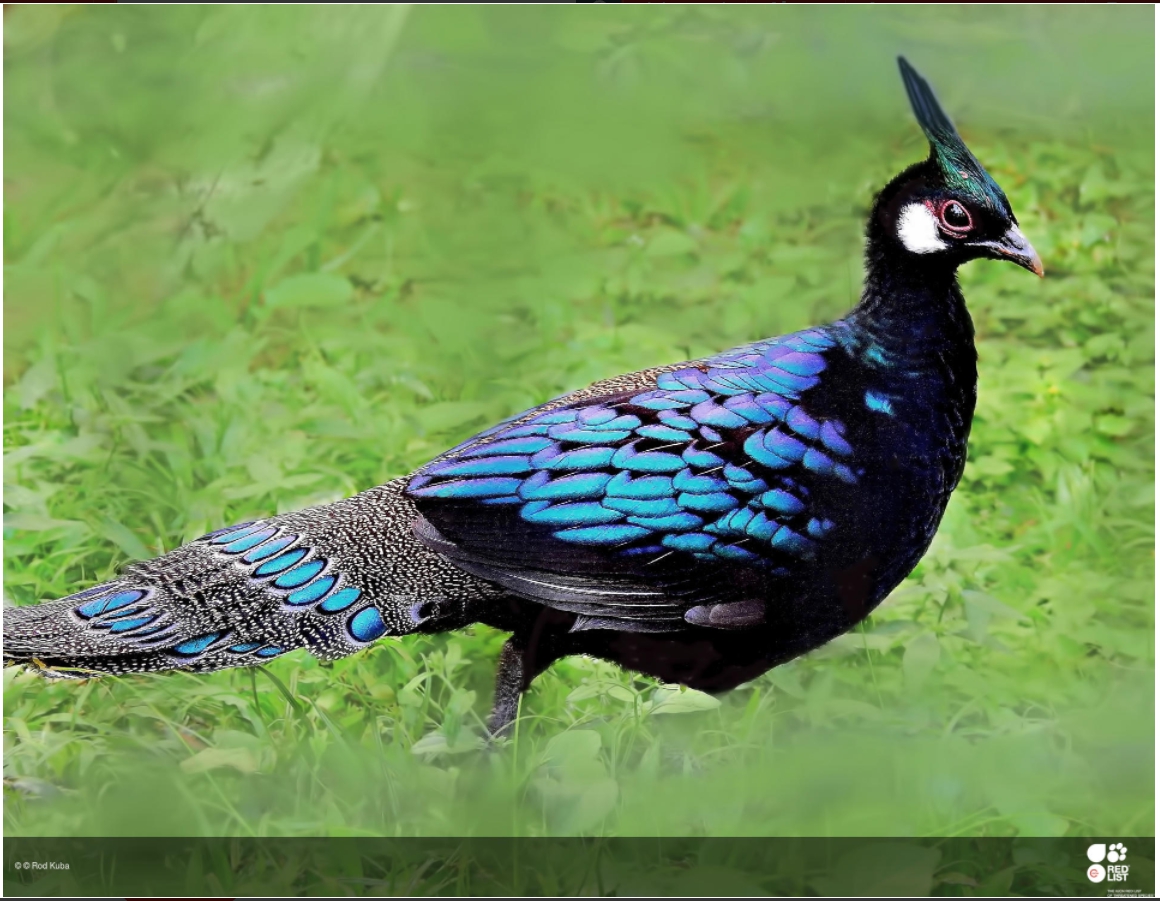| Citation |
BirdLife International. 2018. Polyplectron napoleonis. The IUCN Red List of Threatened Species 2018: e.T22679398A132051467. https://dx.doi.org/10.2305/IUCN.UK.2018-2.RLTS.T22679398A132051467.en. Accessed on 24 March 2022. Brinkman, J.J., van der Ven, W., Allen, D., Hutchinson, R., Jensen, A.E., Perez, C. (2021): Checklist of birds of the Philippines. Wild Bird Club of the Philippines. www.birdwatch.ph |
Description |
JUSTIFICATION
Despite evidence that its population may be larger than previously estimated, this species still qualifies as Vulnerable because it is suspected to be undergoing a rapid decline as a result of habitat destruction, hunting and capture for trade.
RANGE DESCRIPTION
Polyplectron napoleonis is endemic to the Philippines, where it occurs on Palawan (BirdLife International 2001). It is known from c.20 localities throughout the island, with records from at least 11 since 1980. Local reports suggest that it has a wider distribution. In the early 1970s, despite local extinctions, it was not considered particularly rare. In 1995, its fragmented population was estimated to number fewer than 10,000 mature individuals (McGowan and Garson 1995); however, more recent density estimates from Puerto Princesa Subterranean River National Park (Mallari et al. 2011) suggest that this was an underestimate. As a result of the latest density estimates (Mallari et al. 2011), the population is conservatively estimated at fewer than 50,000 mature individuals. The species, however, is still thought to be declining.
DESCRIPTION
This speciess population was previously estimated at fewer than 10,000 mature individuals by McGowan and Garson (1995). Densities recently calculated in Puerto Princesa Subterranean River National Park suggest that the figure given by McGowan and Garson (1995) is likely to be an underestimate, based on estimated forest coverage on Palawan. However, the latest density estimates are unlikely be representative of the whole island. With this in mind, the speciess population is conservatively placed in the band 20,000-49,999 individuals.
Trend Justification: Logging and clearance of lowland forest has been extensive on Palawan and continues, with many areas falling within mining designations. Hunting pressure is also severe in places. As a result the species is suspected to be declining rapidly.
HABITAT AND ECOLOGY
It mainly inhabits primary and secondary forest on flat and rolling terrain, up to c.800 m, occasionally occurring almost up to mossy forest and in Casuarina-dominated dwarf forest on serpentine rock. Surveys in Puerto Princesa Subterranean River National Park found evidence that the species shows a strong preference for old growth forest over advanced secondary growth, which in turn appears to be preferred over early secondary growth, with none recorded in cultivation (Mallari et al. 2011). The speciess population density is thus positively correlated with the density of large trees (Mallari et al. 2011).
THREATS
Deforestation in lowland Palawan has been extensive, and reached a rate of 11% between 2000 and 2005 (Mallari et al. 2011). Logging and mining concessions have been granted for almost all remaining forest on the island. As of December 2008, nine Small Scale Mining Permits had already been issued and there were 354 mining applications pending, covering 6,510 km2 of land within Palawan province (Mallari et al. 2011). Illegal logging is thought to persist in the remaining extensive forest of the south. Forest at Iwahig Penal Colony, regarded as a key site, may be threatened by plans to mine chromite. By the late 1960s, the species was being extensively hunted and trapped in large numbers for live trade, but exports were much reduced by the late 1980s. In the mid-1990s, it was heavily hunted adjacent to Puerto Princesa Subterranean River National Park, and this protected area is still subjected to pressures on habitats, including agricultural encroachment and the harvesting of non-timber forest products (Mallari et al. 2011).
CONSERVATION ACTIONS
Conservation Actions Underway
CITES Appendix I. The whole of Palawan is classed as a game reserve, where hunting is illegal. In 1990, the entire island was designated as a Biosphere Reserve, although the legislation controlling habitat alteration and hunting is extremely difficult to enforce effectively. It occurs in two protected areas: El Nido Marine Reserve and Puerto Princesa Subterranean River National Park (the latter, a UNESCO World Heritage Site and part of the National Integrated Protected Areas System, has been extended to the east, where the species is also known to occur and is under effective management by the local Government of Puerto Princesa city). It was recently used as a flagship species behind efforts to galvanise conservation efforts under the project - Managing threats to key birds in the Palawan corridor: capacity building through applied research (Mallari and Lee 2006). It also featured on a bilingual environmental awareness poster in the "Only in the Philippines" series and is part of the European Endangered [Species] Programme of the European Association of Zoos and Aquaria (www.eaza.net).
Conservation Actions Proposed
Allocate greater resources towards more effective control of hunting in Palawan forests and initiate conservation awareness campaigns amongst forest product collectors. Continue surveys to assess distribution, status and habitat requirements in remaining lowland forests and secondary habitats, particularly south of Brookes Point, on the slopes of Mt Victoria and in remaining forests in the north. Formally protect forests at Iwahig. Support the proposed extension of Puerto Princesa Subterranean River National Park and promote the development of captive-breeding programmes. |

